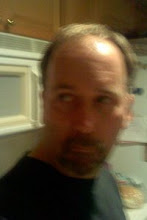I marked up Mark Helprin's (re-typed) story "White Gardens." It was helpful. I noted first that it starts
in media res, meaning "in the middle of things" The opening line is: "It was August. In the middle of his eulogy, the priest said, 'Now they must leave us to repose in white gardens,' and then halted in confusion, for he had certainly meant green gardens." Even by the end of the first sentence, we are oriented--We know the season (summer), we know we're in a Catholic Church (the priest), and we know someone has died (the eulogy). It's a great opening sentence. I was hooked. We also know that the priest, for whatever reason, has gotten nervous somehow and messed up what he intended to say ("for he had certainly meant green gardens"). All of that is clear by the end of the first sentence. I'm sure there's much more even that we can tell by the end of that first sentence. That he's confused, for one. That he's relying somewhat on clerical cliches, for another.
After indicating that the story picks up in the middle of the action, I marked each of the details ("overcrowded church," "tropical suits," "white smoke billowing from a chimney," "shiny new engine," etc.). I also marked lines that dealt with characterization, point of view, sentence structure (dashes, semi-colons, dependent clauses, etc.) figurative language, theme, description, rhythm, sensory imagery, action, setting, conflict, and resolution. If I possessed more initiative, I'd go back and highlight important vocabulary, strong "theme" sentences, and maybe take a paragraph and write a new piece using only the sentence structure in that paragraph of Helprin's. Just to get a feel for the "style" of the piece. But both you and I get the general picture of the story based on what I've done so far.
I was looking for some kind of pattern or evident dissemination of the elements of fiction, but as in all art, it was like trying to capture a butterfly with a shotgun (that's a simile for you folks who are paying attention to such things). What I did notice, however, is that in this particular short short, the story was high on detail, included much sensory imagery, and let a few very specific references sketch in the setting. That was all helpful analysis to me. I went immediately to a short piece I'm working on that is set at a father/daughter dance in an elementary school and did some editing accordingly.
Next, I will try to tackle the Sam Shepard piece (see previous post). I have to either copy it or re-type it. In truth, I may just copy it because I didn't feel I learned that much from re-typing the Helprin story compared to the amount of effort involved.
The good news, though, is that my father/daughter dance short short is shaping up!
Keep writing, Danny.
Labels: authors, flash fiction, writing practice

